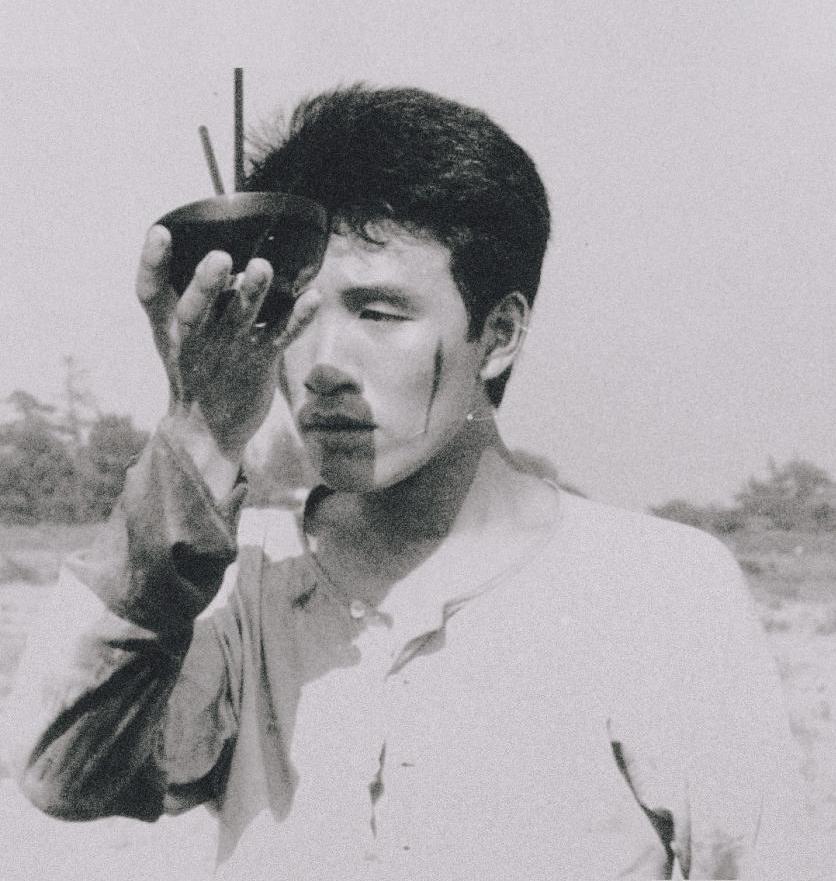
‘Masao Adachi (b. 1939) is a true revolutionary artist, a filmmaker whose unshakable political beliefs have shaped his vision of cinema as an intense engagement with its audience and with its time. A recognized and widely published theorist, a profound thinker about cinematic form Adachi realizes his ideas through his films, inventing avant-garde techniques to shatter cinematic conventions and challenge viewers to understand the complex, often incendiary, issues grappled with in his work: sexuality, politics and the always forestalled but ever urgent promise of revolution.
‘Adachi’s films and career testify to the impressive vitality of the underground film movement as a little recognized shaping force of postwar Japanese cinema. Indeed, formative to Adachi’s cinematic imagination was his membership in the late 1950s in the radical student film clubs so instrumental in the student protest movement that crested and ultimately splintered with the massive strikes against the controversial ratification of the Japan-US Security Treaty in 1960. Working as part of a collective, Adachi realized his seminal early films, Bowl and Closed Vagina which are equally legible as experimental films and allegories about political activism. The notion of a non-hierarchical collective, with the director just one voice among many, would remain a core principal of Adachi’s cinema. The complex layering of meaning in Adachi’s student film continued in his work with the late Koji Wakamastu (1936-2012), first writing and eventually directing a series of politically outraged “pink films” whose combination of perverse sexuality and radical politics were like nothing seen before on Japanese screens. Demented and visionary, Adachi-scripted, Wakamatsu-directed films such as The Embryo Hunts in Secret and Sex Jack are recognized today as pioneering dark visions of another, secret side of the post-war Japanese miracle, a dark psycho-sexual nest of repression, trauma and guilt. Adachi’s search for a radical cinema able to raise awareness of the invisible net of political hegemony gave way to his extraordinary AKA: Serial Killer, a pseudo-documentary about a nineteen-year-old murderer that gave form to the so-called “landscape theory” Adachi pioneered, offering a series of coldly objective images of landscapes and cityscapes that the young killer may have seen, environments that shaped his warped, troubled perspective.
‘In pursuing his belief in the cinema as an instrument and even a weapon in the struggle against the capitalist-imperialist juggernaut transforming Japan and so much of the post-WWII world, Adachi went further than just about any artist in Japan. Following their controversial and outspoken appearance at the 1971 Cannes Film Festival, Adachi and Wakamatsu traveled to Lebanon to make a film in support of the Palestine resistance. The result was Red Army/PLFP: Declaration of World War a newsreel-style propaganda film whose fiery call to arms Adachi himself would follow in 1974 when he abruptly abandoned filmmaking and returned to Lebanon to join the Japanese United Army. For the next twenty-eight years Adachi withdrew from the film scene he had so electrified, his activities remaining largely unknown until his arrest in Lebanon on passport violations and his extradition to Japan where he served a brief prison arrest and where he remains today in a kind of limbo, forbidden by the government to leave the country. Under the watchful eye of the authorities, Adachi’s return to cinema revealed none of his powers diminished, his revolutionary beliefs still strong, although tempered now with a distinct melancholy. This quality is apparent in his impressive first feature film in over thirty years, Prisoner/Assassin, an abstracted and partially autobiographical meditation on imprisonment, exile and the consequences of sacrifice for a higher cause. Affirming Adachi’s status as one of the masters of political counter-cinema, his latest work testifies to his unfailing conviction and vision of film as an artistic weapon for awakening its audience to the revolutionary struggle for truth.’ —- Haden Guest
___
Stills
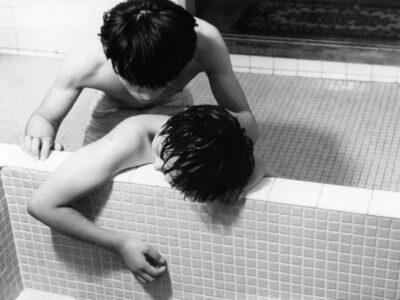

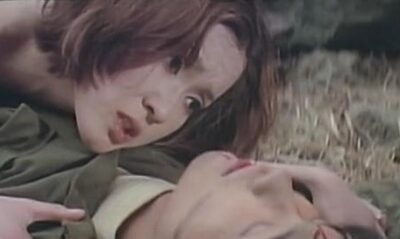

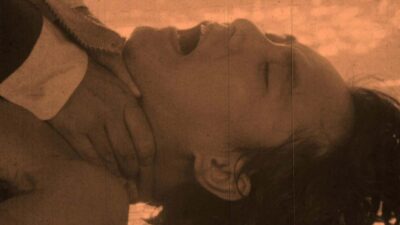
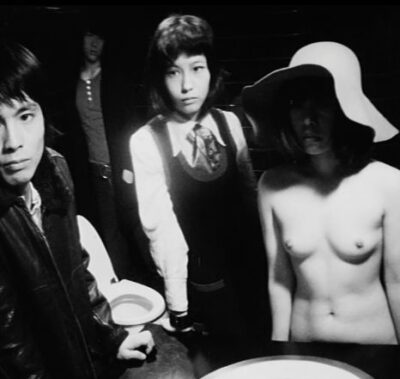
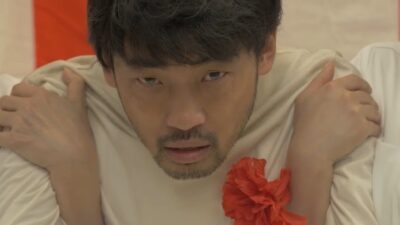
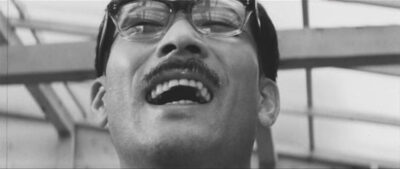




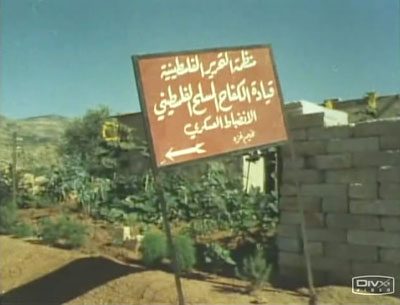
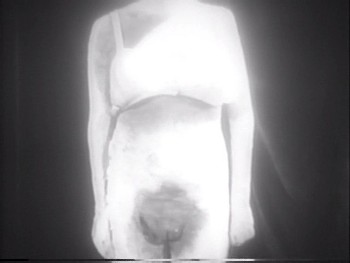


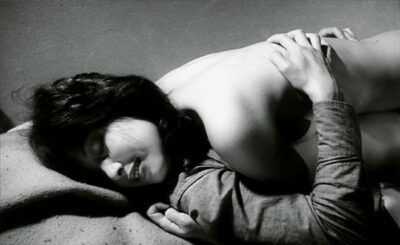
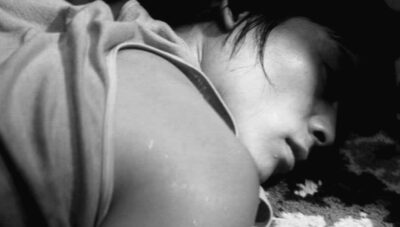



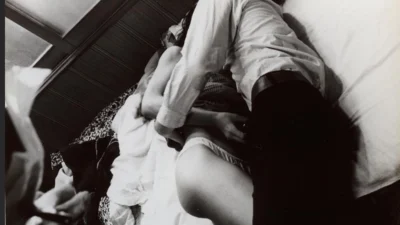
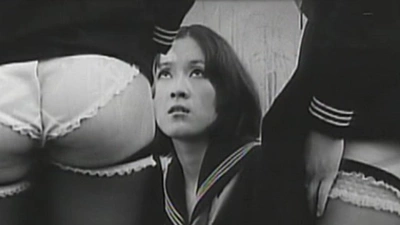
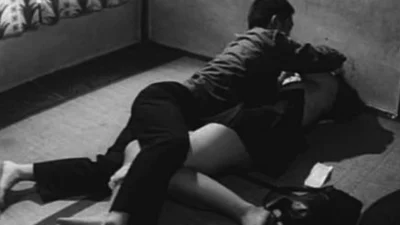


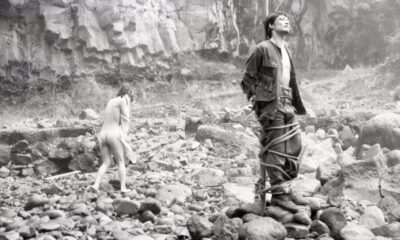



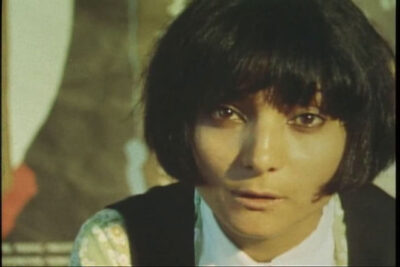

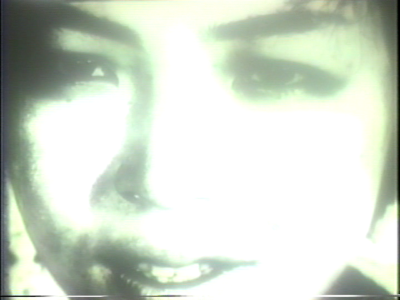
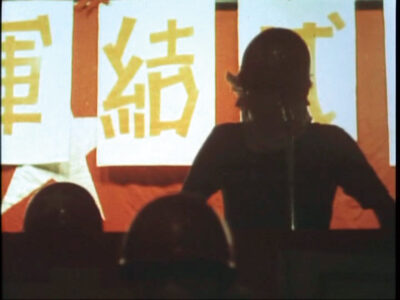
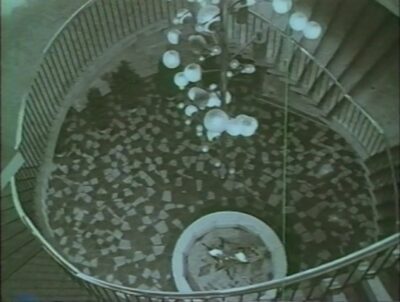

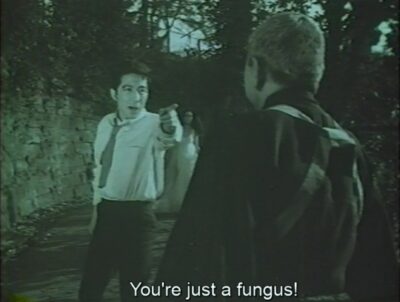
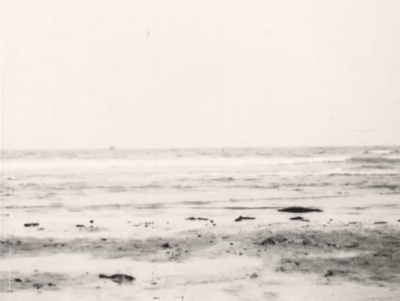

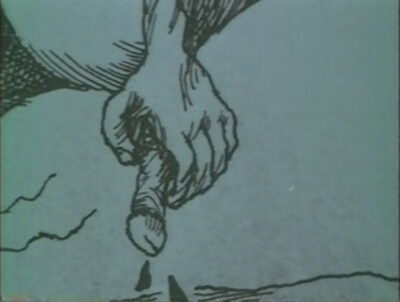
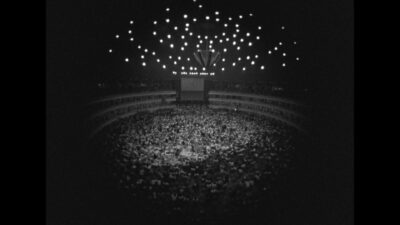


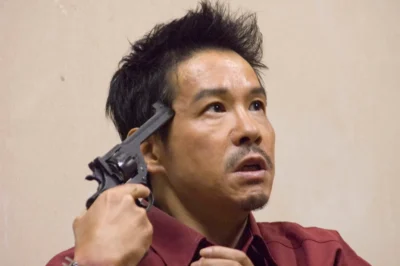
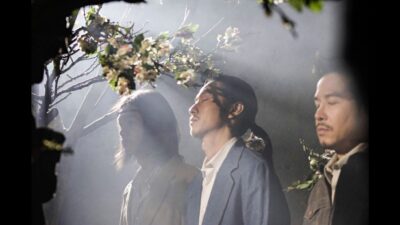
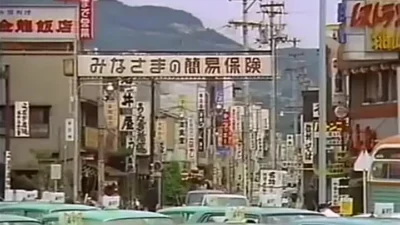
____
Further
Masao Adachi @ IMDb
FILM = ACTIVISM. THE REVOLUTIONARY UNDERGROUND CINEMA OF MASAO ADACHI
Book: ‘Le bus de la révolution passera bientôt près de chez toi – Ecrits sur le cinéma, la guérilla et l’avant-garde (1963-2010)’
JAPANESE RED CINEMA: KOJI WAKAMATSU & MASAO ADACHI
Book: ‘Masao Adachi’ by Gō Hirasawa
The Making of an Internationalist: Interview with Masao Adachi
Masao Adachi – Midnight Eye interview
Attaining Vertical Thinking – Masao Adachi As Possibility
A Bright Darkness: Masao Adachi
Repletion: Masao Adachi’s Totality
Messages in a Bottle: An Interview with Filmmaker Masao Adachi
Figures of Dissent : Masao Adachi
A Japanese Director’s Path to Revolution
____
Extras
Masao Adachi
Tokyo / Lebanon by Masao Adachi
L’ANABASE DE MAY ET FUSAKO SHIGENOLU, MASAO ADACHI ET 27 ANNÉES SANS IMAGES
_______________
It May be that Beauty has Strengthened our Resolve (2011)
‘Philippe Grandrieux is one of that rare breed of directors who consistently strive for the impossible. One of the few others is called Masao Adachi, and with him in front of the camera, Grandrieux redefines the possibilities of the portrait film. Adachi decided to become a filmmaker after reading André Breton’s surrealist manifesto. But if the struggle for freedom is the defining project of surrealism, the 71-year-old Japanese avant-garde director is preoccupied just as much by the struggle itself as he is by the strenuously won freedom. Adachi is one of the most radically political, uncompromising and headstrong filmmakers of his generation. But even if one has not already had the chance to see one of his rarely screened films, there are nonetheless all sorts of reasons for spending an evening in his company. Grandrieux has produced a congenial portrait which is more about making radical choices, and about thinking in and not least acting through images. Grandrieux’s typically pitch-black and atmospheric pictorial universe transforms the cinema into a psychological ‘dark room’ that overcomes the limitations of the medium to expand the spectator’s range of experience. Revolution is also an image. The question is, how one turns that image into reality. (Masao Adachi).’ — dafilms
the entirety
______
Interview

Harry Harootunian: I’ll start with a general question, which was already supplied by the last point you made in your video address you had sent to us at the time of your showing, where you say that “my principle is to see politics and media as one and the same thing. I have never separated them in my thinking, and I think it is time to make art again as our own thing without worrying about institutional judgments.” While I agree with the sentiment, it raises the question of why and how does film allow you to engage with a specific social situation as a condition of actually acting upon it?
Masao Adachi: This is really an enormous question, so the answer may come in a roundabout way. As a person who makes films, I believe that film is basi- cally a product of my own imagination. Those people who watch films also try to see them through their imagination. For cinema, this mutual relation of imagination is everything. I make films following my imagination, and this process itself becomes my thinking or message.
Additionally, when I express my thinking through cinema, there are two possible methods. One of those methods is to try to tell my own private story as honestly as possible. Another method is to project everything that is built up from my imagination. That is to say, to project the memory of reality, the things that we conceive but aren’t necessarily real, to put forth an image of unreality, or what we might call a way of observing the relationship between the antirealistic or antipersonal things of the world and our own reality.
I think it is the task of filmmaking to produce work without catego- rizing or distinguishing based on these two methods or directions. We nor- mally refer to the first method as that of documentary and the second we call feature film, and make various categorizations based on these and other methods. Yet, on my part, I want to make films, whether documen- taries, dramas, or any other kind of film, by focusing on that relationship between the two methodologies. For example, those things that are part of Japan and those which are not, those things that are part of cinema and those which are not, like paintings or novels. I work from a basis of wanting to demolish these categories.
From this basic stance, along with the thought that what we call the political is society itself, it is the form of history itself; in addition, I also feel that film and revolution, or film and arts, or politics and arts, are inseparable. Moreover, in recognizing that, at the same time, I would like to present their inseparability. There are times, depending on the subject matter, when it takes the form of a perfectly normal film [laughter], but the decision is based on the situation in which I find myself. To put it very schematically, the thematic content is the critical relation that happens in between so- called politics and art, without resorting to a theory of cinema.
However, as I said previously, I feel that the problem of imagination is at the heart of everything, so a mere critical relation is finally insufficient. Therefore, while I will continue to think about these and other questions as Professor Harootunian poses them, I would like to explain the basic position and circumstances around making the films A.K.A. Serial Killer and The Red Army/PFLP. With regard to the political conditions at that time, domestically the nation was in the midst of reinforcing the U.S.-Japan Security Treaty had been in place for ten years [since the 1960s] and with it the new political relationship between the United States and Japan. At the same time, it was a period in which the oppressive sociopolitical tendencies to further solidify Japan’s political and economic system began anew. That is only the political aspect, but in fact, Japan possessed a very rudimentary social structure, and when there is some political trend or cul- tural current, everything else gets pulled into that [prevailing] trend in one fell swoop. That was the character of Japanese society.
In addition to the domestic situation, within the international sphere, there was first the Korean War, and then after that the Vietnam War, which was a continuing current in the social conditions in which we lived. It was within this situation that various cultural and artistic experiments and models exploded with great vibrancy onto the scene. However the vast majority of these experiments were those in which exploiting technological qualities made possible through the development of industrial economics took precedence and had absolutely no direct correlation at the level of content with the contemporary conditions or social trends.
Within the field of film, for example, 8mm film cameras began to spread to the point where anyone could make a private film and conduct all kinds of experiments. It was a time in which the spread of scientific technology on a mass level also began in the fields of art and music, and the flourishing of various experiments using new concepts and methods that broke with classical models. Within such trends, I always held to the thought of seeking a better way at the level of method to tie together these new possibilities with opportunities that were less trained on technology.
Around the time of the making of A.K.A. Serial Killer and The Red Army/PFLP, I was also involved with various other films, but the question of how to face the new political and social oppression was always among my biggest concerns. A suffocating sense of enclosure stemming from politi- cal oppressiveness underlay these feelings, and this took on an extremely sharp form. The theme of A.K.A. Serial Killer, about the serial killer Norio Nagayama, comes from this, and I was thinking about how to express that feeling of enclosure itself, the problem of how to break that feeling, in various film experiments. For that reason, my own interest was also torn between reality and the negation of that reality. As a result, I myself feel conditions under which I was changing are well reflected in the different methods employed by A.K.A. Serial Killer and The Red Army/PFLP.
HH: You felt torn between that sense of enclosure on the one hand and the political situation?
MA: Yes. Consequently, my interest in art and politics, or what we might call the relationship between culture or media and politics, my interest in that relation itself, was escalating.
HH: So all the films you were particularly concerned with or making were in some way or another mediated by this concern for the divergence you perceived occurring in Japanese society at that time?
MA: That’s right. In the films I completed in my earliest student years, I made films explicitly with the theme of politics or [dealing with] the political environment. However, I did not attempt to express those themes in a political manner. As I said at the beginning, even there, imagination is everything, so I believed it was more important to think about how to work with metaphor.
HH: In other words, you are saying that you were responsive to the specific political situation at that moment, but in the films that you made at that moment, their content does not really deal with the situations explicitly. If that’s the case, perhaps it’s the form of those particular films that really speaks to that contemporary situation or alerts us to the force of an immediate political environment.
MA: That is definitely one characteristic. Theoretically, I moved toward the “theory of landscape” (fûkeiron), and from theory of landscape to news- reel films, and finally reached a point where I was trying to make my own low-budget diary-like films. At the same time, there also appeared another project that envisaged screenings as a movement (jôei undô) . . .
HH: Some of us called attention to a similarity between French Situationists and the theorization of fûkeiron, inasmuch as they were both simultaneous and contemporary with each other [inflecting the same conjuncture], and often shared similar views on how to configure fields of action. Can you speak about how fûkeiron was formed among groups of people with whom you were actually working or connected at the time?
MA: The making of A.K.A. Serial Killer progressed as we tried to develop a script for the film, traveling around to each area of Japan that Nagayama had lived in while he was drifting about the country. As we did this, there were continuous debates, centered around staff members Masao Matsuda [film critic] and Mamoru Sasaki [scriptwriter], over how to grasp the theme of the movie, in other words, the world view of the protagonist, Nagayama, and then how to put that into visual language. At the same time, I was think- ing, from the perspective of film style, about whether we should shoot it as a documentary or incorporate dramatic elements.
When we stood within the landscape that greeted Nagayama’s everyday life, there was something that we could feel was common to every landscape in every town we visited. This was just at the time in Japan when, politically, there began to be all kinds of clamor about casting off the post- war, and, economically, the flames of Japan’s policies for high economic growth were reaching a peak. In every region that we came across, the old towns where citizens had made their daily lives were crushed, incongruous groups of tidy buildings sprouted and shot off into the horizon, the rustic lanes of old villages were replaced with concrete and turned into highways, and even in the landscape of preharvest fields there hovered a suffocating air of efficiency and mass production. When we felt this, we were convinced that Nagayama, however far he drifted, must have been seized by this same suffocating sense of continual oppression. In other words, every place you went in Japan was turning into small urban zones modeled on Tokyo, and even the historic scenery of famous places was transformed into commer- cialized tourist spots through catchphrases used in television campaigns, like “Discover Japan.” This situation itself, though not in some solidified form, involved the overflowing will of the government and the power of the time. Certainly it was not only Nagayama—rather, the oppression incorpo- rated all the people who lived in these transformed places. So we were con- vinced that Nagayama, with gun in hand, kept firing at this landscape itself, and that this is how he became embroiled in the serial killing incident. The theme of the movie A.K.A. Serial Killer was decided—we resolved to depict the figure of arbitrary power that appeared in the landscape, comparing it with the alienated and threatened sense of existence experienced by Naga- yama himself. This was the beginning of the fûkeiron debates, wherein the subjectivity of each individual was simply swallowed up by the “reality of landscape being expropriated by power,” and we made the besieged spirit of Nagayama the protagonist. Thus some elevated dramatic factor, as well as even the so-called documentary method, was unnecessary, or, rather, would be damaging to fûkeiron. We created the film by focusing on the con- tinuation of landscape alone.
These fûkeiron debates that began during the production of A.K.A. Serial Killer soon drew the reactions of friends who were photographers and painters; the debates continued to expand, and all manner of experi- mental art works from a wide variety of fields was born. However, at that time, we had no direct exchange with theoretical trends or film movements abroad, and so I had no idea that similar efforts were being made in other countries. Instead, we had put out the monthly journal Eiga hihyô [film criti- cism], and the debates, centered on the efforts of creating a new film move- ment, were advanced there; we could say that the so-called fûkeiron was molded by Masao Matsuda’s theorization of this situation. Ultimately, fûkei- ron was born from and flowed out of the conditions in Japan at that time. Later, I came to learn of the existence of a confluence of movements and theoretical exchanges in the West through the work of people like Jean- Luc Godard, and I had a strong sense that, “Wow, truly a simultaneous and global movement could happen.” Then I began to look not only to the making of film but also to the importance of screenings as a movement (jôei undô). It was at that point that I became a guerilla [laughter].
HH: But being a guerilla in this instance means leaving the world of the imagination for acting on it, doesn’t it?
MA: Yes, but at the same time I would say I am very much a romanticist. As a very basic standpoint, I went on to make another new film and started my life in the guerilla society with a guerilla lifestyle. So, for me, to be a cineaste and to be a guerilla are almost interchangeable, although people say they are confused; on the one hand a cineaste, and on the other hand a gue- rilla—but no, through my body they are one and the same thing.
HH: So, in other words, becoming a guerilla is also sustaining the imagination?
MA: Yes. For instance, even within my lifestyle as a guerilla, in the begin- ning, I was living far too casually, and I was often scolded, “Mister, what the hell do you think a revolution is?” After being there [in Palestine and Lebanon] for twenty-six years, although some Japanese guerillas had come as volunteers and learned to read and write Arabic, I alone was unable to do so. Those days were too full as it was.
HH: Right, I kept thinking of that work by Jean Genet, where he goes to Palestine. But I’m not sure whether he ever learned Arabic, either.
MA: Once, I saw him in a Palestinian refugee camp in Beirut. I tried to talk with him, but he never spoke with anybody—Palestinian or non-Palestinian. Many artists and writers came to see him in the hotel, but there were no conversations with him. He was just drinking wine quietly. He said he was very ready to come here and so studied many important things; and he wrote, as a message to all journalists and artists, “I have no chance to talk with all of you” [laughter]. A Japanese critic, Inuhiko Yomota, who had visited Palestine later, was also surprised when I recounted the episode. In Tunisia, he had tried to see Genet to ask him about his stay as an immi- grant. Thinking about it now, Genet could never ultimately recognize him- self in the place where he actually existed [even when he was sitting in a refugee camp], and I think this may have been an internal problem for him. Yet I wonder if even a single person noticed the deep and overflowing sym- pathy he held for the Palestinian people that existed within that silence. In later years, he wrote about the silence he maintained at the time. I read his posthumously published reflections, Un Captif amoureux, and it was really wonderful.
Just to bring the conversation back, of course, I ordinarily did film work with people like Kôji Wakamatsu and Nagisa Oshima. That in itself was exciting, but somehow I felt my involvement was kind of limited. Wakamatsu could understand my feelings in that regard, but Oshima was extremely critical.
HH: Why so?
MA: He was of the opinion that if you don’t bring everything into the film, all your anxieties and thoughts, then you are not a director. I think Oshima is a very fine documentarist, and sometimes his narrative cinema is also of a very high level, politically and humanistically. But, at the same time, he wanted to put everything within a frame. I said no: the frame will be there, but, at the same time, the audience should decide. It is fine for the film- maker to put all his feelings into the work, but he should make films where the audience can watch it more freely as well.
______________
12 of Masao Adachi’s 14 films
______________
Bowl (1962)
‘Overripe with psychosexual poetry and stark, oneiric rituals, Adachi’s filmmaking debut, made while he was still an undergraduate, counts among the more resonant accomplishments of the now famous Nihon University Film Club. Adachi’s obvious fascination with the wide-eyed watchfulness of childhood and the uncanny is an expression of the important surrealist strand running throughout the post-WWII Japanese avant-garde.’ — Harvard Film Archive
Excerpt
_____________
The Closed Vagina (1963)
‘The struggles of a woman and her male partner – where the woman suffers from a sealed vagina – in a world that views her as an object of pleasure and reproduction. Adachi’s follow-up to Bowl using the figure of a woman suffering from an unusual sexual aliment has often been taken as a controversial allegory for the political stalemate of the Leftist student movement after their impressive wave of massive fiery protests failed to defeat the neo-imperialist Japan-US Security Treaty. The ritualistic solemnity of the charged sexual scenes contribute to the oneiric qualities of Closed Vagina which Adachi would later insist was an open work, not meant to deliver any kind of deliberate political message.’ — Harvard Film Archive
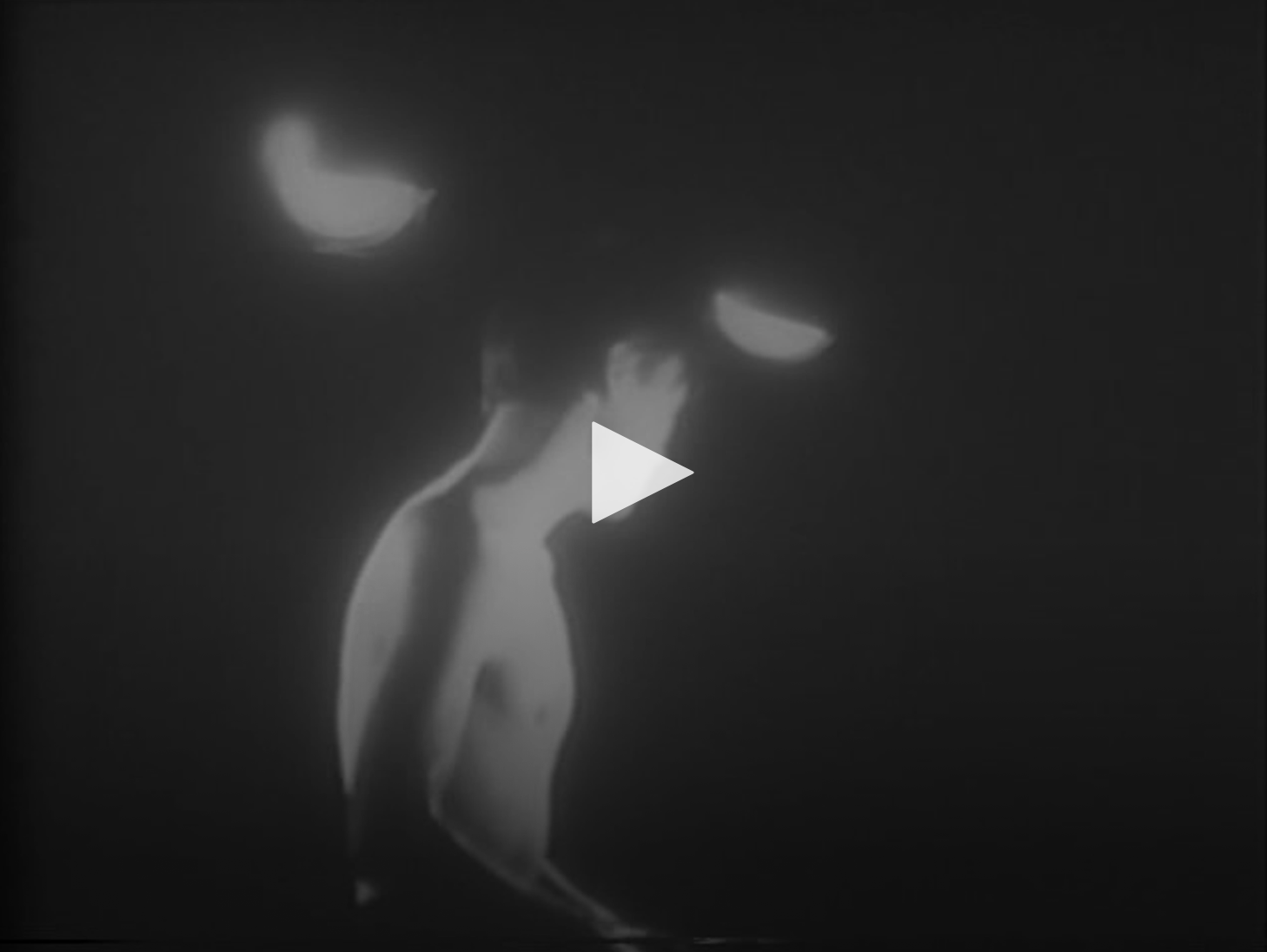
_____________
Abortion (1966)
‘Wakamatsu collaborator and revolutionary activist Masao Adachi directs his first pinku: a strange parody of exploitative birth films centring on a gynaecologist obsessed with separating sexual pleasure from reproduction. Fascinating viewing, but not the best starting point for exploring Adachi’s work.’ — Dave Jackson
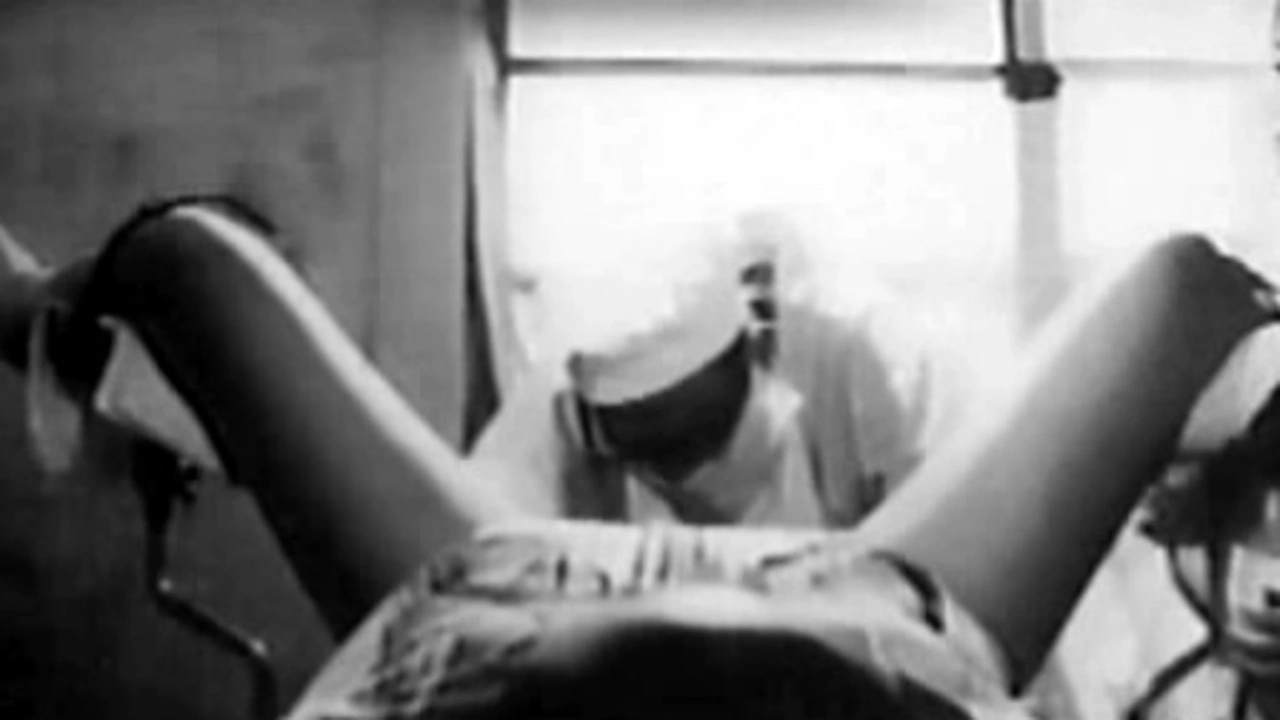
_____________
Galaxy (1967)
‘In between collaborations with Nagisa Oshima and Kōji Wakamatsu at the latter’s production outfit, Adachi completed Galaxy completely independently. The film, which is considered the first feature-length experimental film to be produced in post-war Japan, is a sepia-toned dream instigated by a beachside car breakdown. In it, a young male driver wanders through a fantasy replete with violence, surreal apparitions, and grotesque illustrations. The vignettes which are by turns funny and terrifying proceed in a looping cycle and we end where we began, with a busted car. Notably, Adachi enlisted Fluxus musician Yasunao Tone to compose Galaxy’s jittering score.
‘The film was featured on the opening program at Tokyo’s Theatre Scorpio (named for Kenneth Anger’s Scorpio Rising), which became a center of underground film exhibition in the years to come. Later, Adachi would complete several leftist pink films and experimental documentaries before (like a mirror oposite of novelist Yukio Mishima) joining the Japanese Red Army in the Palestinian liberation movement of the 1970s, eventually settling in Lebanon.’ — Nightletter

_____________
Sex Zone (1968)
‘Inspired by the true story of a Geisha murdered in a city famous for its baths, Adachi forged here his favorite style, a kind of conceptual documentary recounting the incident in monotone. The same event that at the beginning of Violated Angels escaped every principle of causality, is portrayed here as a singular anti-spectacle.’ — Letterboxd
the entirety
______________
Female Student Guerilla (1969)
‘Three high school girls about to take their final exam, secretly plan to ruin the diploma ceremony in order to avenge themselves of that school which treated them as delinquents. Two classmates who discovered their plan decide to join the rebellion.’ — MUBI
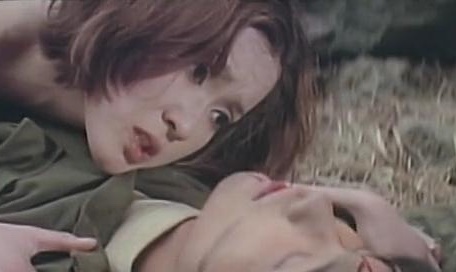
_____________
A Woman in Revolt (1970)
‘Directed by radical leftist (and later terrorist) Masao Adachi, this is one of those great New Wave-era movies that mixes formal experimentation with pink-film, soft-core porn. A haggard old crone enjoys watching her daughter have sex with men. A husband and his mistress strangle his wife to death, then pay a young woman a million yen to dispose of her body. They have frenzied sex with each other while the girl buries the carcass under the floorboards just a few feet from them. Every once in a while, there’s a few seconds of unmotivated musique concrete or synthesizer blips; every once in a while, a sudden flash of washed-out color for no apparent reason. No morals, no lessons, no meaning. The sex is feverish, but passionless.’ — Doug Dibbern

____________
Gushing Prayer: A 15-Year-Old Prostitute (1971)
‘Masao Adachi’s A Gushing Prayer figures the possibility for lived contradiction. The film was produced in the wake of the American occupation of Japan and its forced assimilation of Japanese society to Western values, yet it offers a cross-examination of the struggle against the occupation. This structuring is typical of Adachi’s work and thus, despite the historical specificities of this film, A Gushing Prayer is a prayer for us all. It asks: how is it possible to escape the perceived totality of history and of capitalism?
‘The cross-examination is figured through the bodies of young people. A Gushing Prayer is the story of four teenagers coming to terms with their sexuality. The film is divided into vignettes that repeatedly return to the same question: “Can we beat sex?” Adachi has said of this period that he wanted to “describe the way in which society was blocked” and that his films are “are an image of society at the time: I wanted to describe the feelings of a generation whose story was beginning to be written. Violence was present in all structures of this society. I wondered how people who were not heroes could survive this”.
‘Despite this, the film manages to avoid nihilism through a battle with itself. During their experiments with sex, the teenagers continuously question each other and demand to know: “What do you feel?” Simultaneously, the film is organized as a meta-interrogation of form and style. The montage and mise en scene attempt to abstract us from its containment with the flesh. Shots are interrupted with political slogans and coloured filters saturate the shot with red, blue and green. But as each vignette ends, a new one begins in much the same way. This repetition ensures an active avoidance of linear order and fixity of meaning.’ — Lauren Bliss
Trailer
Excerpt
Excerpt
_____________
w/ Koji Wakamatsu The Red Army PFLP: Declaration Of World War (1971)
‘In 1971, Koji Wakamatsu and Masao Adachi, both having ties to the Japanese Red Army, stopped in Palestine on their way home from the Cannes festival. There they caught up with notorious JRA ex-pats Fusako Shigenobu and Mieko Toyama in training camps to create a newsreel-style agit-prop film based off of the “landscape theory” (fûkeiron) that Adachi and Wakamatsu had developed. The theory, most evident at work in A.K.A. Serial Killer (1969), aimed to move the emphasis of film from situations to landscapes as expression of political and economical power relations. In 1974 Adachi left Japan and committed himself to the Palestinian Revolution and linked up with the Japan Red Army. His activities thereafter were not revealed until he was arrested and imprisoned in 1997 in Lebanon. In 2001 Adachi was extradited to Japan, and after two years of imprisonment, he was released and subsequently published Cinema/Revolution [Eiga/Kakumei], an auto-biographical account of his life.’ — Internet Archive
the entirety
______________
A.K.A. Serial Killer (1975)
‘AKA Serial Killer documents the social upheaval and political oppression that roiled Japan in the 1960s, profiling a nineteen-year-old serial killer Norio Nagayama. An indictment of media sensationalism, the film humanizes the young man by situating his crimes in the larger context of his environment.’ — Letterboxd
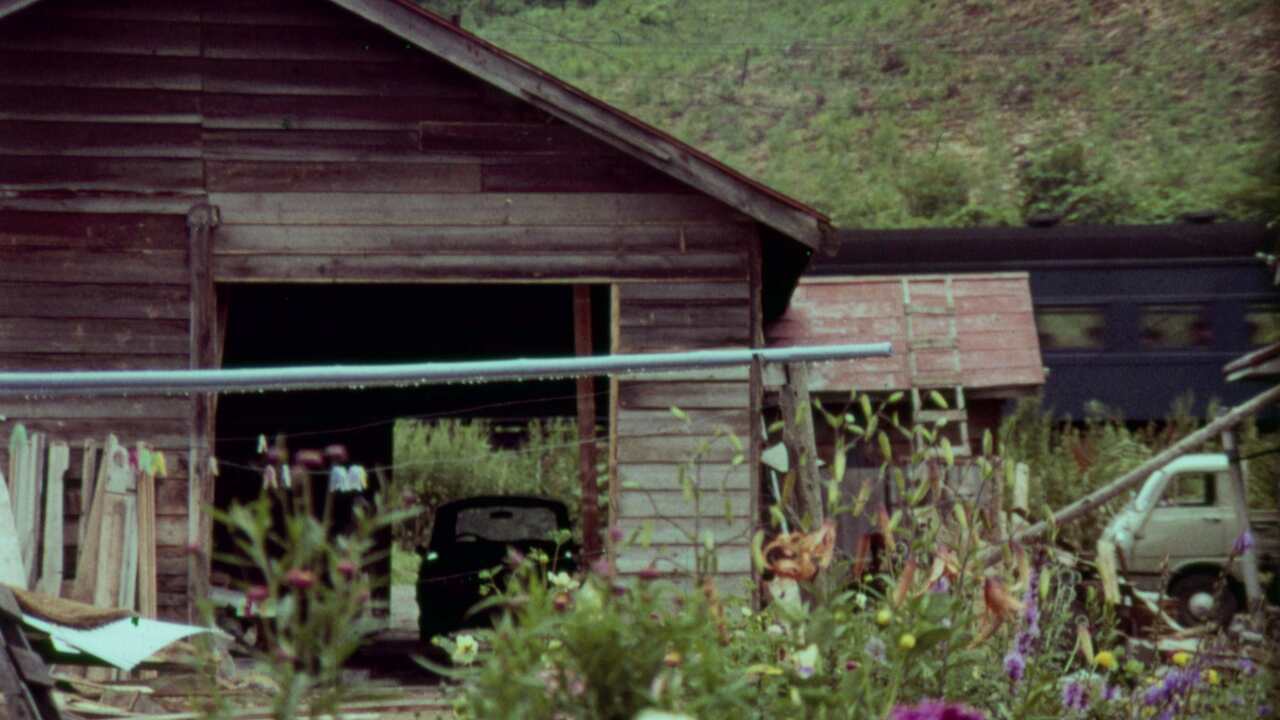
______________
Prisoner / Terrorist (2007)
‘Adachi took reality and made it surreal, this film, as cliché as it sounds, is based on real historical facts. It is based on the attack on the Israeli Lod Airport on May 30th 1972. The attack was executed by members of the communist Japanese Red Army recruited by the PLFP (Popular Front for the Liberation of Palestine). All the attackers were killed, all but one, Kôzô Okamoto he was captured and was imprisoned for 13 years. It is important to give the historical context to this film, the story is his time in prison.
‘The film starts off with the suicide attack and we quickly move to the imprisonment, this is where the journey starts, this man is taken to the limits, he subjected to all kinds of torture, using drugs and humiliation, they turn him to an obedient dog. All this time he’s losing his mind, questioning his revolutionary ideals and going in and out of insanity and humanity. Along this path of insanity our protagonist encounters figures from the Soviet times, from the French revolution and the Italian Gramshy. The imagery used is cold and gritty and wouldn’t feel out of place in a Shinya Tsukamoto film, the same can be said on the sound industrial design. Adachi turns this prisoner’s mind inside out as his thoughts and fears are manifested in front of us, but it’s more than just a prison psychological thriller, born from the revolutionary ideas and theories of the Japanese New Wave this film is bound in politics and experimentation. Adachi blurs the lines between cinema and revolution and as with all his films this one is no different, this is simply revolutionary.’ — HanTheCan
Trailer
______________
Artist of Fasting (2016)
‘“During these last decades the interest in professional fasting has markedly diminished.” The opening words of Franz Kafka’s short story, A Hunger Artist, are echoed in Masao Adachi’s film, his first after a long hiatus. Where Kafka’s allegorical tale compared the purity of the artist’s intention with the commercial interests that chose to manipulate it, Adachi bluntly wields ARTIST OF FASTING (断食芸人) as a potted summary of modern politics and protest movement.
‘In an ordinary shopping centre, an unidentified man (Hiroshi Yamamoto) sits down on the street. A young boy is fascinated, takes a photo of him and it goes viral. The man is soon hailed as a “Hunger Artist” by the media, attracting fans, disbelievers, followers and pseudo-worshippers to surround his spot. Two Buddhist monks, for example, wait for him to achieve a kind of enlightenment, while the homeless and gangsters regularly steal the money and food that’s left for him.
‘ARTIST OF FASTING is not an easy film to watch, filled with both extreme absurdist humour and equally extreme sex and violence. There are at least two ways of viewing ARTIST OF FASTING, which is wholly in keeping with ambiguity of ideals that Adachi explores in the narrative. You could take the whole thing as satire, a systematic skewering of various societal tropes as each visitor to the “Artist” comes burdened with their own insecurities, agendas or greed. The Artist, just as he is in Kafka’s short story, is treated as if he is in a circus, complete with an official cage and armed guard.’ — Richard Gray
Trailer
*
p.s. Hey. ** Bill, First, no maybe. Thank you. There are a few haunted attractions in your general areas that look quite good if you’re into it. Time for me to create my horror movie queue as well. I’ll put ‘Surrogate’ as an ‘if need be’. ** Tea, Hi. Yeah, when I was young and starting out, writers like Sade and Genet and Burroughs did the same thing for me. I’m honored. I can certainly see why you’re enamoured with that guy. Muse. Thanks about ‘The Weaklings (XL)’. What’s your week looking like? ** Dominik, Hi!!! Yes about the Sotos, and, oh shit, I need to order that today if I’m not already too late, yikes. You not only can move to my town, you can be the co-Mayor with me! I think you’ve already probably figured out that my headquarters would be LACHSA Halls of Horror. So predictable, but nonetheless … I’ll make sure your love gets the maximum experience. Love opening a vegetarian/vegan food store, ideally a Naturalia, within walking distance of my apartment, G. ** _Black_Acrylic, Hi, Ben. Yes, the High Desert one caught my fancy too. I’m going to try to get to it when I’m in LA although it’s about a two and a half hour drive from where I’ll be staying, so … hm. I’ll investigate Jerry Sadowitz, thank you. I love card magic. If you ever get to LA, be sure to go to the Magic Castle. It’s wall to wall to wall card magicians performing nonstop, and it’s a lovely place. ** Jamie, Hi, Jamie. Of course they have the exact same effect on me, obviously. I find it enormously uplifting, inspiring, etc. One of the highest examples of great Outsider Art, and not even so Outsider in some cases. No, what’s beautiful about the haunt community is that they seriously do it out love for the genre and the excitement of making them. With rare exceptions, when they do charge, it’s just in hopes of covering the expenses involved in making the haunts. They’re like poets in that sense, but working in a 3D horror experiential context. Or something. I could go on and on. ‘Hell Fest’: I’ll check it out, thanks! My weekend was a combination of lowkeyness and the usual film hassles/frustrations/logjam-breaking. Par for the course. Here’s to our respective weeks. Shaved love, wow, what a great idea. Anti-rickety love, me. ** Steve Erickson, Hi. Yes, I hope and intend to see the vast majority of those haunts, although a few are quite, quite a far away from LA central. Nonetheless. And Zac and I will be taking/dragging our film associates and crew along with us for their education. I’m glad you’re feeling at least a little better. Enjoy the NYFF, lucky you! ** Okay. Today it’s Masao Adachi’s turn to sit in the blog’s filmmaker’s throne. Enjoy. See you tomorrow.




 Now available in North America
Now available in North America 
Wow, I think Masao Adachi escaped my huge Japanese film binge from high school. But my interest is piqued, so I’ll add it to my ever-growing list. I feel like I have no time to myself these days. I want to finish BR Yeager’s ‘Amygdalatropolis’ but I need about ten more hours a day.
I met that guy (or, muse) recently and he was very, very kind. I blabbed the cliche stuff about how he was such a huge inspiration to me, etc. He signed my autograph with “Keep writing!” So yeah, I will do just that. I was thinking how great it’d be to dedicate a book to him someday but, uh, well, you know.
My week is looking like an unpredictable series of twists and turns of varying nature. I hope yours is too. Or isn’t, depending on your preference.
< HREF=VVVhttps://www.youtube.com/watch?v=XBYZQoSfIuY"" " I Died"
Hi!!
Ah, the co-Mayor! Thank you very much! Especially that we get to convene at the LACHSA Halls of Horror. I’m not gonna say I’m surprised, but it’s an excellent choice nonetheless.
Grocery pains? It’d be nothing for love to put a Naturalia in the immediate vicinity of your apartment, so… it seems like a fair wish. Love making sure that Anita gets the job she applied for because she really, really wants it, and they promised to send a reply today but haven’t yet, Od.
Howdy Dennis.
I’ve come across Masao Adachi’s name a few times before but never seen anything. I’ve always fancied AKA Serial Killer just for that title. Do you have a recommended starting point or a favourite? Isn’t he an influence on James Benning or am I making that up?
Yes, yes, yes to your glorious thoughts and words on they who make the haunted attractions. I love that. I was hoping there wasn’t too much of a money making thing going on and got the sense that would be that case. 3D horror experiential poets…? Yes, please. In other haunted house news, I watched Hell Fest and quite liked it, but mostly because it further whetted my appetite for such attractions (although the type featured in the film seemed very corporate, but I’m sure they must have got some design help from genuine haunt-makers). Then I read that Haunt was supposedly better and set in more of a lowkey ‘extreme haunted house’, so having time on my hands, I watched that also and also enjoyed it. I’d be interested to hear what you thought of either of them with your love and knowledge of the milieu, but if you do watch, I found low expectations paid high dividends (what a recommendation).
How was Monday for you? I got another Covid vax and have no side-effects so far. Hope you have a nice Tuesday.
Anti-Pearl Jam love,
Jamie
Work has me in dreadful orange county for Halloween. Since I joined the workforce at 16, I have never had that day off. I wonder what I could find there that day. After all, I feel like OC is already Halloween every day. Bad joke, maybe. Think I’ll take a bus to Laguna Beach and see what’s spooky over there. Never been there. I did see you had one haunt mentioned – Gershon Dungeon. Maybe I could see that ??? Hopefully, my next book will be out by then. Maybe I’ll even put together a post about it, if you’re interested? Actually, there’s a Halloween house in it, based on my first experience in one. I was about 9 years old. After that, I didn’t go back to a “haunted house attraction” until I was about… 19? I still get memories of it when I get in life for these sorts of things.
Peace and love.
‘Hey Dennis. AKA Serial Killer’ is one of my favourite films of all time, I think. I’m not sure if you saw, but he’s got a new film coming out tomorrow, ‘REVOLUTION+1’. It’s a biopic of Tetsuya Yamagami, Shinzo Abe’s assassin, that’s apparently been speed-made in 2 weeks so that it comes out on the same day as Abe’s getting his big state funeral. It’s being screened in secret and I would have loved so much to have been able to see it, were I still in Japan. In personal news, I’ve actually started an additional job that’s next to Madeleine, right down your neck of the woods right? I’m kinda miserable about it though because it’s nothing special and moreover it’s going to steal so so much of my time. I think it was pretty naïve to expect to get by financially when I’m living central and only working part-time, but all the same I feel like once again I’m deprioritising my art and the things that are majorly important to me just to live semi-comfortably. Anyway, enough self-pity haha! Have a Tuesday like a lip balm you can use on your own life, xoT
Hello, Dennis, how are you? I admire Masao Adachi. Thank you for the day.
I’m very sorry for my long absence from the blog. I had tough seasons (Covid, moving, intense teaching, family issues, difficulties in writing, etc.) And they are continuing, alas.
Hope you have been well and aesthetic. Sorry that I couldn’t write you for months. But as you perhaps know, you are an everlasting inspiration to me.
h now j